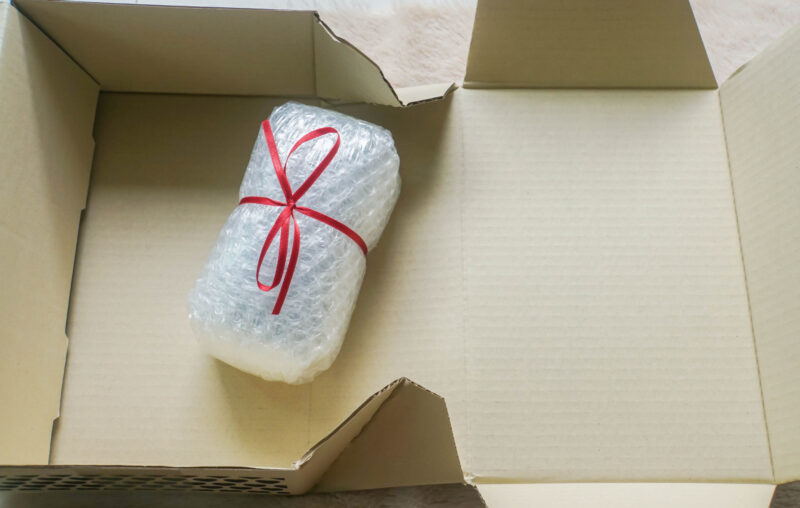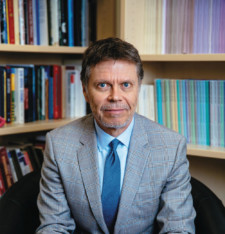Spare a Thought for Bubble Wrap

Comparing Christmas today with Christmases past, David Waugh and Laura Williams eloquently explain that we ordinary Americans in 2022 are far wealthier than were ordinary Americans of just a few decades ago. We are fortunate indeed to live where and when we do!
But evidence of our enormous prosperity, and of its source, is found not only in that which during the holiday season is seen – gifts, decorations, food, and holiday entertainment – but also in that which is not seen… or, rather, in that which is ignored and discarded.
I’m talking about packaging.
Even the simplest packaging – such as the paperboard box that held the shirt you received as a gift – required innovative design and efficient production. The top half of the box fits like a glove over the bottom half. Each corner is a sharp 90 degrees. The paperboard is just the right weight for holding your shirt. A lesser weight would be too flimsy; a heavier weight would have been unnecessary and, thus, wasteful of material.
Not impressed? Then take a look (if your trash-disposal company hasn’t yet carted it away) at the Styrofoam or molded-plastic shell that held and securely protected your new laptop computer or flatscreen TV, with the screen wrapped for further protection in a delicate translucent material. And perhaps your new countertop kitchen appliance was held firm in its box by air-filled pillows or honeycomb wrap paper.
Ponder for a moment the different kinds of packaging materials that you, eager to hold and behold each of the gifts that Santa brought, excitedly pulled out or cut away, and quickly discarded as trash on Christmas morning. Try to recall the many different shapes, sizes, and textures of the outer boxes. Each one was perfectly designed to hold its contents. No heavy cardboard or foam rubber was wasted to package your new pair of jeans; a thin and pliable, but surprisingly tough, piece of plastic did the job. In contrast, that wonderful new pizza oven came to you in an outer box of rigid cardboard that encased a thick shell made of molded paper pulp. Being made in China, the heavy oven and its fragile parts had to be packaged securely for shipping to you abroad.
And voila! Each part is present and intact.
You likely didn’t notice, but within each box there was almost no unoccupied space. Open spaces in boxes are costly. Not only must they be filled with the likes of polystyrene ‘peanuts’ or with paper in order to reduce the likelihood of damage during shipping, any part of a box that leaves an open space is part of a box that can often be shrunk. And by shrinking the surface area of the box, less material is used to produce that box. Here, as in many other areas, the profit motive works wonders for the environment!
From the design and engineering of the boxes themselves to the creation of new, ever-lighter and ever-stronger packaging materials, nearly every gift that we and our wide-eyed children unwrap on Christmas morning is securely encased in a container that is a monument to human ingenuity. Each aspect of boxes and packaging materials was pondered carefully by someone (or someones). What’s the optimal size and shape of the box? Out of what material should it be constructed? How best to design the manner in which each box opens and closes? How best to manufacture each kind of box and each type of packaging material? If such decisions are made carelessly, either the costs of packaging, or the amount of damage to the packaged products, will be excessive.
Only a very wealthy society can afford to devote so much human ingenuity and effort to the careful production of packaging materials that are promptly discarded, in most cases, without a thought after a single use. Yet the innovativeness that is entrenched within even the most mundane of modern-day packaging materials (stuff such as cardboard and Styrofoam) is essential to modern prosperity. Modernity as we know it exists because humans’ innovative spirit was unleashed, to be bridled not by the state or by elites, but overwhelmingly by market forces responding to the demands of ordinary people as consumers. This innovative spirit is so central to capitalism that Deirdre McCloskey proposes renaming capitalism “innovism.” This innovism, unsurprisingly, occurs not only for the production of consumer goods and services, but throughout the vast unnoticed regions of the entire economy – even in the supply of the packaging materials that almost no one notices.
Again, the packaging of our holiday gifts is something that we aim to cut through and discard as quickly as possible in order to lay our hands on the marvels within. We pay no attention to it. Boxes and packaging material are literally thrown away with nary a thought. But next Christmas do try, for just a moment or two, to marvel not only at your gifts encased within their protective packages, but at the packaging itself. And give thanks that you live in a society that rewards individuals to apply their creativity and effort to making such packaging so abundant that you hardly ever notice it, and think nothing of throwing it away.
Wishing everyone a wonderful, prosperous, and freer 2023!










